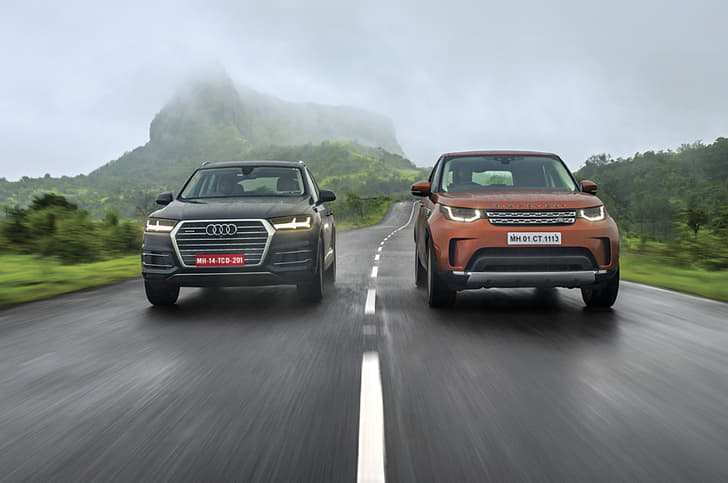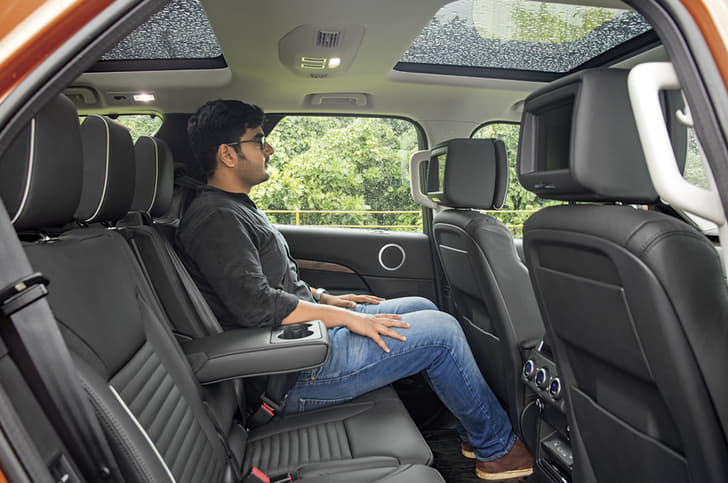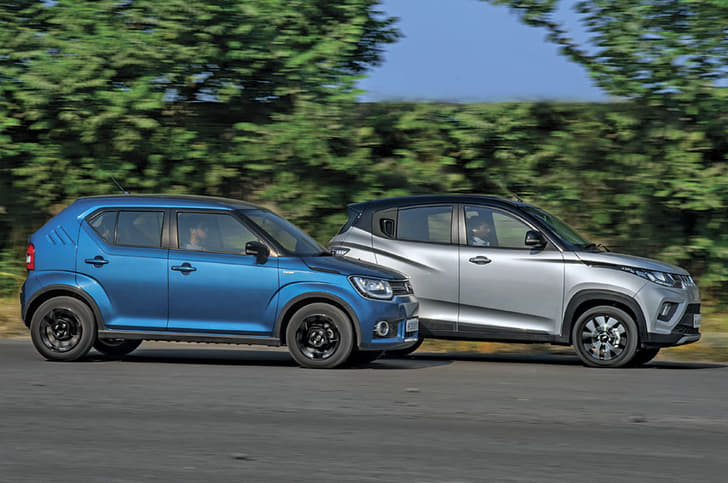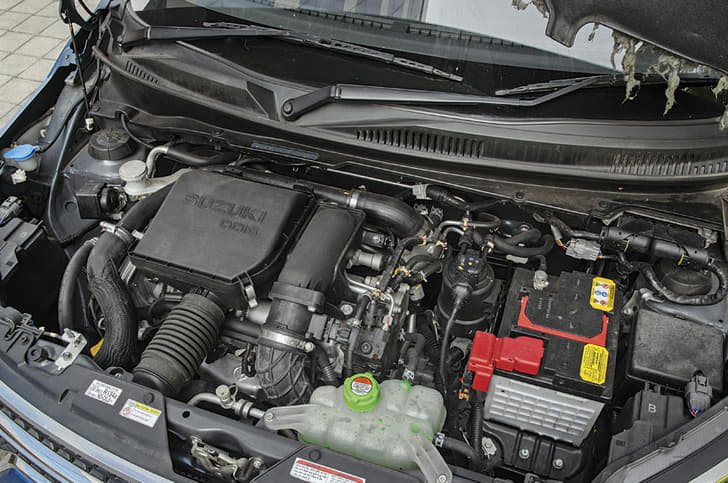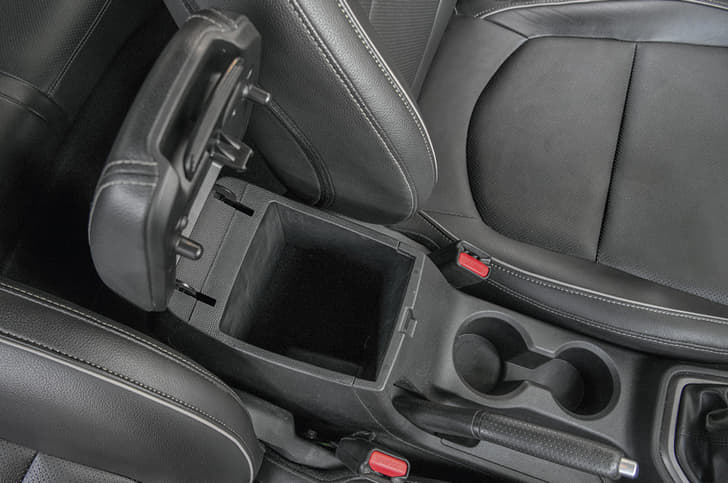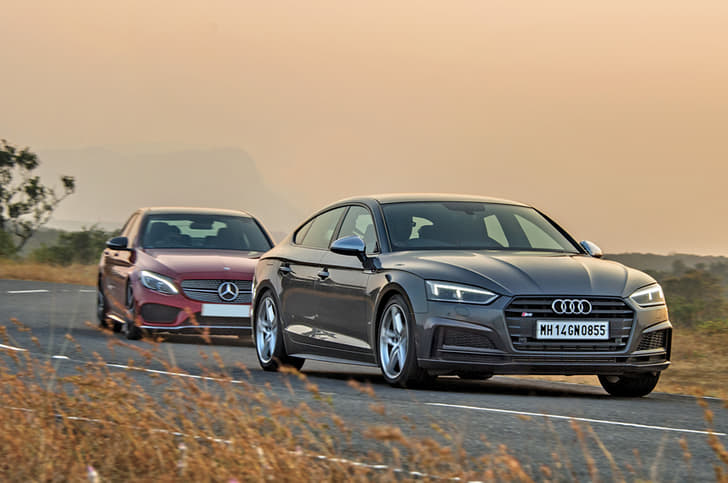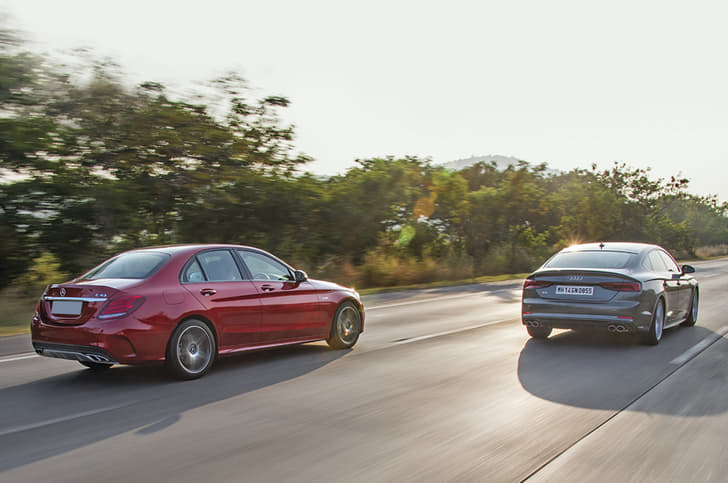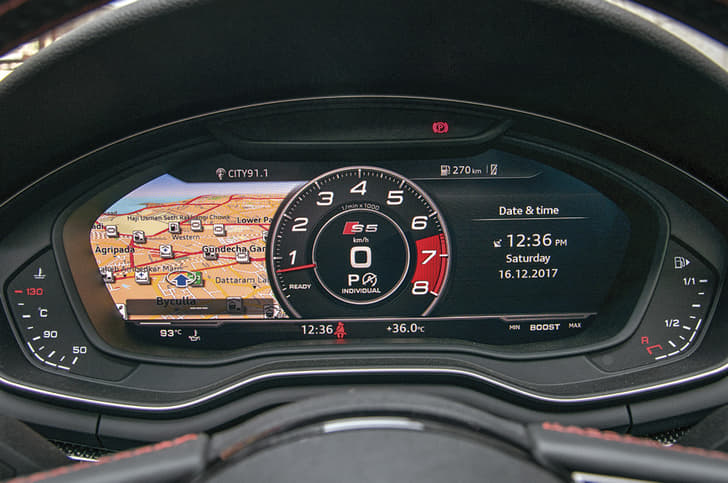It’s been a while since we’ve had two large petrol-engined luxury SUVs on the pages of this magazine. In fact, the last time around, it was a contest between the BMW X5 M and the Range Rover Sport SVR. And that’s the thing. In the luxury SUV space, petrol engines have always been the preserve of the mad performance models, while it’s the diesels that actually sell in numbers. But things are changing. With the anti-diesel sentiment picking up steam (or should that be soot?) in India, interest in petrol SUVs is on the rise. Mercedes-Benz, BMW and Jeep have already responded to this by bringing in sensible petrol versions of their existing SUVs, and the latest carmaker to do so is Audi with the recently launched Q7 40 TFSI. Land Rover, too, has jumped on this bandwagon by making its all-new Discovery available in India with a petrol version from the outset. And it’s this version that’s likely to be the mainstay of the range. But that’s got less to do with its impact on the environment and more to do with its impact on your bank balance. Petrol Discoverys cost between Rs 10.8 lakh to Rs 17.3 lakh less than the equivalent diesel versions, which is plenty money even for someone happy to spend upwards of Rs 70 lakh on a new SUV. Similarly, the Q7 costs Rs 3 lakh less than its diesel sibling, spec-for-spec.
What we want to find out today is if your money is better spent on the petrol version of the Land Rover Discovery or the Audi Q7.
VITAL STATISTICS
You can’t make much of the Q7’s specifications from its confusing 40 TFSI badge but here are the facts. The 40 TFSI runs a 2.0-litre, four-cylinder, turbo-petrol engine that produces 252hp at 5,000-6,000rpm and 370Nm of torque at 1,600-4,500rpm. The figures are impressive but not quite so when you see them in light of the Discovery Si6’s. The Disco’s larger 3.0-litre, V6, supercharged (yes, supercharged!) petrol engine makes 340hp at 6,500rpm and 450Nm of torque at 3,500-5,000rpm. Petrolheads, I know you’ve already picked your winner, but before you rule out the Q7 know that, although by an inconsequential 0.3sec (7.65sec to the Disco’s 7.96sec), it is faster in the dash from 0-100kph. The Discovery does start pulling away from 120kph but then you’d seldom see this duo in a drag race. The more pertinent measure of performance is kickdown acceleration and that’s where the Land Rover has the slight edge.
| Powertrain | ||
|---|---|---|
| Land Rover Discovery Si6 HSE | Audi Q7 40 TFSI Technology | |
| Engine | V6, 2995cc, supercharged-petrol | 4 cyls, 1984cc, turbo-petrol |
| Power | 340hp at 6500rpm | 252hp at 5000-6000rpm |
| Torque | 450Nm at 3500-5000rpm | 370Nm at 1600-4500rpm |
| Gearbox | 8-speed automatic | 8-speed automatic |
What the numbers don’t tell you is the Discovery V6’s crisp responsiveness, undoubtedly aided by the supercharger, and how the experience just gets better and better the longer you keep your right foot pinned to the pedal. The Disco’s mid-range is punchy and what makes the strong build of power to the 6,500rpm limiter all the more special are the accompanying noises. Seriously, you’ll lower the volume on the Meridian sound system just to hear the whirrs and whines of the supercharged engine.

The Q7’s engine, in comparison, doesn’t sound half as special and even gets buzzy when extended. Power delivery isn’t quite as smooth either when, say, you floor the throttle for a quick overtake. The engine gives its best past 2,000rpm, and, when rushed, the sense you get is that this is a small engine being made to do big things. Still, you have to hand it to the Q7 for keeping the Disco honest on the performance charts despite being significantly down on power and weighing in at about the same 2.2 tonnes. Much of the credit goes to the quick-shifting eight-speed gearbox that remains on the ball at all times. In town, this Q7, like the diesel Q7, impresses for its refinement. It cuts out outside noise better than the Disco, registering fewer decibels at idle, 50kph and 80kph.
| Performance | ||
|---|---|---|
| Land Rover Discovery Si6 HSE | Audi Q7 40 TFSI Technology | |
| 0-20kph | 1.09s | 0.85s |
| 0-40kph | 2.45s | 2.01s |
| 0-60kph | 3.90s | 3.48s |
| 0-80kph | 5.61s | 5.30s |
| 0-100kph | 7.96s | 7.65s |
| 0-120kph | 10.61s | 10.67s |
| 0-140kph | 13.97s | 14.45s |
| 20-80kph (in kickdown) | 4.90s | 5.10s |
| 40-100kph (in kickdown) | 5.47s | 5.90s |
TURN BY TURN
Both these SUVs come suspended on air springs as standard and use electric power steerings, but there is a big difference in the way they drive. For one, you sit lower in the Q7 and the whole experience is far more car-like. It feels relatively agile and is generally quicker and more willing to change direction. More weight at the steering would have made the driving experience more rewarding at speed but on the plus side, the lightness makes the large Q7 surprisingly easy to drive in town. Low-speed ride quality is good but, like the diesel variant, there is a bit of float that creeps in as you up the pace. Oddly enough, we didn’t find the petrol Q7 as sure-footed as the diesel version out on the highway. Shuffling through the seven drive modes didn’t quite do the trick either.
| Dimensions | ||
|---|---|---|
| Land Rover Discovery Si6 HSE | Audi Q7 40 TFSI Technology | |
| Length | 4988mm | 5052mm |
| Width | 2073mm | 1968mm |
| Height | 1846mm | 1740mm |
| Wheelbase | 2922mm | 2994mm |
| Tyre size | 255/55 R20 | 255/55 R19 |
| Kerb weight | 2223kg | 2240kg |
You’ll find yourself towering over other road users from the high-set cabin of the Discovery. Visibility is great, but the Disco also feels every bit its size and is a bit nerve-wracking driving around in tight confines. At low speeds, there’s also a hint of firmness from the suspension. It’s when the roads open up that you see the best of the Discovery. It’s unshakable on straight highways and doesn’t get disturbed by potholes taken even at high speeds. There really is a tremendous sense of security you get from behind the wheel of the Discovery. And what adds to the experience is the steering that has a lovely old-school heft to it. Through corners, you’ll have to be far more mindful of your pace here than in the Q7, but handling, on the whole, is tidy for something so tall and heavy. Note, the Disco doesn’t have selectable drive modes for the road.

What the Discovery does get is Land Rover’s Terrain Response system (it primes the engine, gearbox, steering, suspension and other electronics for various off-road scenarios), and there’s selectable low range too. The Q7 has an Off-Road mode of its own and you can raise the suspension as you can in the Discovery. But, in the mucky stuff, where the Q7 will take you far, the Discovery will take you further still. The Land Rover’s 900mm wading depth and 283mm of max ground clearance give it serious off-road cred and genuine ability.
OUTSIDE-IN APPROACH
To draw an analogy about the way these SUVs look, the Q7 is the clean-shaven, suit-wearing businessman, while the Discovery is the bestubbled khakis-clad adventurer. The rugged Discovery really is more national park than business park. For the lithe and sharp Q7, it’s the other way around. Take your pick. Team ‘bigger is better’ will take keenly to the Discovery though. The Disco is significantly taller than the Q7 and looks simply massive.
The Disco, with its stepped roof, upright D-pillar and ungainly long rear overhang, looks the way it does for a reason – to provide maximum space for its seven occupants. The third row (surprisingly an optional extra for Rs 1.1 lakh) is properly usable for adults and space in the middle row is really good too. The seating position on row three is quite knees-up though and the all-important second row is also a touch too low set for our liking. The best seats in the house are the ones up front. Richly finished and equipped with their own foldable armrests, the seats are no less than thrones. What’s also nice is the chunky and built-to-last look to everything inside. Sure, there could have been more flair to the dashboard design but it all somehow goes with the Discovery’s no-nonsense persona. You’ll also like the Disco’s 10-inch touchscreen for its slickness and speed. Pity, there’s no Android Auto or Apple CarPlay.
| Equipment checklist | ||
|---|---|---|
| Land Rover Discovery Si6 HSE | Audi Q7 40 TFSI Technology | |
| LED headlights | Yes | Yes |
| Heated/cooled front and rear seats | Rs 1.17 lakh | NA |
| Third row seats | Rs 1.10 lakh | NA |
| Surround camera | Rs 44,057 | Yes |
| Automatic parking | Rs 66,083 | Yes |
| Auto climate control | 3-zone | 4-zone |
| Apple CarPlay/Android Auto | NA | Yes |
| Rear-seat entertainment screens | Rs 1.46 lakh | NA |
| Sunroof | Rs 1.10 lakh | Yes |
| Air suspension | Yes | Yes |
| Airbags | 8 | 8 |
Where you have to step up into the Discovery, you walk into the Q7. And the feeling inside is very different too. The dashboard looks properly new-age, helped in no small part by the brilliant Virtual Cockpit digital instrument console that continues to blow us over even years after its introduction. The MMI infotainment system is also simple and straightforward to use. Attention to detail, on the whole, is brilliant and you will have to search hard to find low-rent plastics. The front seats are really comfy but what the chauffeur-driven will take keen interest to know is that the Q7 has the better middle row. Sure, the seat squab could have been longer but seat comfort is better, and with the seats set to the farthest back position, there’s more legroom as well. Where the Q7 loses big time is in the third row. Access to the rearmost seats is awkward and space is tight for adults. In fact, the Q7 feels decidedly 5+2 after you’ve been in the Discovery. The spare tyre (now optional) that sits vertically within the cabin in place of one of the last row seats only makes matters worse.

Both models offer plenty of storage and feature second- and third-row seats that fold flat should you need to partake in house-shifting missions in your luxury SUV. The Discovery also gets a useful retractable shelf in the boot that can take up to 300kg of load. Electric fold for the third row is standard fit on both the SUVs, but you can have the Disco equipped with this function for the second row as well, and also seat fold via the centre touchscreen. Land Rover does give more options to spec your car (such as this version’s dual sunroofs, rear-seat entertainment screens and heated/cooled front and middle-row seats), but rupee-to-rupee you get more as standard
on the Q7.
OWNER'S PRIDE
The Q7 has long been our favourite full-size diesel SUV, but does it repeat the magic in petrol guise? I’m afraid it doesn’t, not with the 2.0-litre engine, at least. You see, where the diesel V6 is one of the highlights of the 45 TDI, the four-cylinder petrol engine is one of the weaknesses of the 40 TFSI. Sure, it works well in town but ask more of it and you’ll be left a bit wanting. Still, the reasons to buy the Q7 remain its cutting-edge interior, middle-seat comfort and almost car-like ease of use.
The Discovery, on the other hand, has the numbers on its side and really does wow for its
V6 engine. But there’s more. It’s a proper seven-seater and a proper off-roader, and it offers a degree of versatility that you don’t get in the Q7. With some vital options checked, you will end up paying more for the Disco, and it will cost more to run too thanks to its thirsty supercharged engine; but then the added outlay also buys you a lot more SUV. All said, it’s the Discovery Si6 that’s the one you’d like to chart new courses in, family and friends in tow.
| Verdict, rating and price | ||
|---|---|---|
| Land Rover Discovery Si6 HSE | Audi Q7 40 TFSI Technology | |
| Price (ex-showroom, India) | Rs 77.85 lakh | Rs 74.43 lakh |
| Rating | 9/10 | 8/10 |
| Verdict | Pricier but more capable off-road, more rounded on-road and also the better seven-seater. | Luxurious and quick but not as effortless as you’d expect a Q7 to be. |

